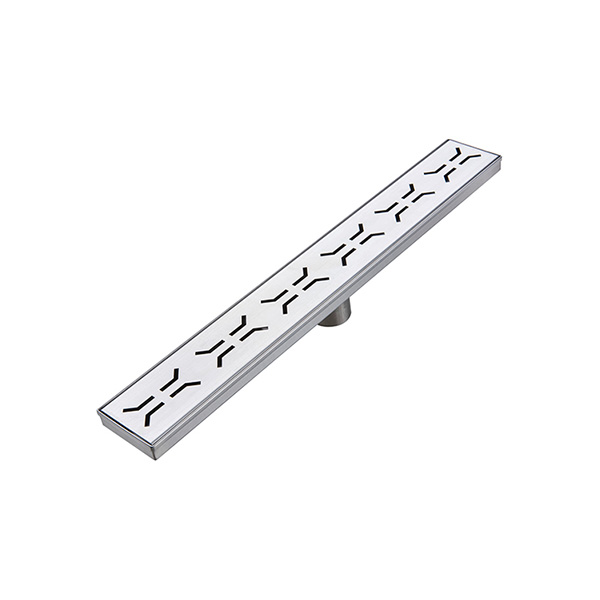Become your trusted floor drain product partner and supplier in China.
Tel: +86-576-87422105, Email: [email protected]
"Nothing is best,only better". Better people are sincerely willing to cooperate with new and old customers. Let's hand in hand,and create the bright future together.
+86-576-87422105 Contact UsRecessed Linear Drain has become a preferred choice in modern bathrooms, commercial spaces, and outdoor applications due to its sleek design and efficient water management. One critical factor affecting its performance is the slope design, which directly influences how efficiently water is drained. A proper slope ensures that water flows smoothly towards the drain without pooling or stagnation, while an improper slope can reduce efficiency, cause overflow, or cause hygiene issues. Understanding how slope design impacts water flow efficiency is essential for both designers and installers.

The slope of a Recessed Linear Drain refers to the angle or gradient of the floor surface that causes the drain. Typically, a slight incline is necessary to guide water towards the drain by gravity. The recommended slope is often between 1% to 2%, depending on the drain length and the type of flooring material. A steeper slope can accelerate water flow but may cause water to splash, while a shallower slope may slow drainage and allow water to accumulate. Achieving the correct slope is vital for improving drainage efficiency and preventing long-term water damage.
Water flow efficiency is directly influenced by the slope, causing the Recessed Linear Drain. A properly designed slope allows water to maintain momentum and reach the drain quickly. If the slope is too gentle, water may stagnate, leaving puddles and increasing the risk of mold or slip hazards. Conversely, an excessively steep slope can result in uneven flow, splashing, or even noise issues due to turbulent water movement. By carefully balancing the slope, designers can ensure that water is removed rapidly while maintaining smooth and quiet drainage.
Slope design also interacts with floor materials and installation techniques. Porous or textured surfaces can slow water movement, requiring slight adjustments in the slope to maintain suitable efficiency. In tiled areas, installers must ensure that the slope is consistent across joints to avoid low spots where water may pool. The precision of the slope during installation is critical; even small deviations can affect water flow efficiency, demonstrating the importance of accurate measurement and professional installation practices.
A well-designed slope not only enhances immediate drainage efficiency but also contributes to the long-term performance of the Recessed Linear Drain. Properly sloped floors reduce water retention, which reduces mineral buildup, debris accumulation, and the risk of clogging. This makes cleaning easier and extends the lifespan of both the drain and the surrounding flooring. Regular inspection of slope integrity, especially after renovations or settling, helps maintain suitable water flow efficiency over time.
To ensure efficiency, designers and installers should consider factors such as floor length, water flow volume, and user habits when determining the slope for a Recessed Linear Drain. Incorporating a slight gradient from multiple directions towards the drain can enhance efficiency in large areas. Additionally, coordination with the drain channel design, including its width and outlet positioning, further optimizes water removal and prevents stagnation.
The slope design of a Recessed Linear Drain is a critical determinant of water flow efficiency. Correctly executed slopes allow for rapid and smooth water removal, prevent pooling, and reduce maintenance issues. Consideration of floor material, installation accuracy, and long-term maintenance ensures that the drain performs effectively over its lifespan. By prioritizing slope design, designers and installers can guarantee efficient, hygienic, and aesthetically pleasing drainage solutions in a wide variety of applications.
Copyright © Yuhuan Better Machinery Co., Ltd. All rights reserved

 English
English Español
Español عربى
عربى